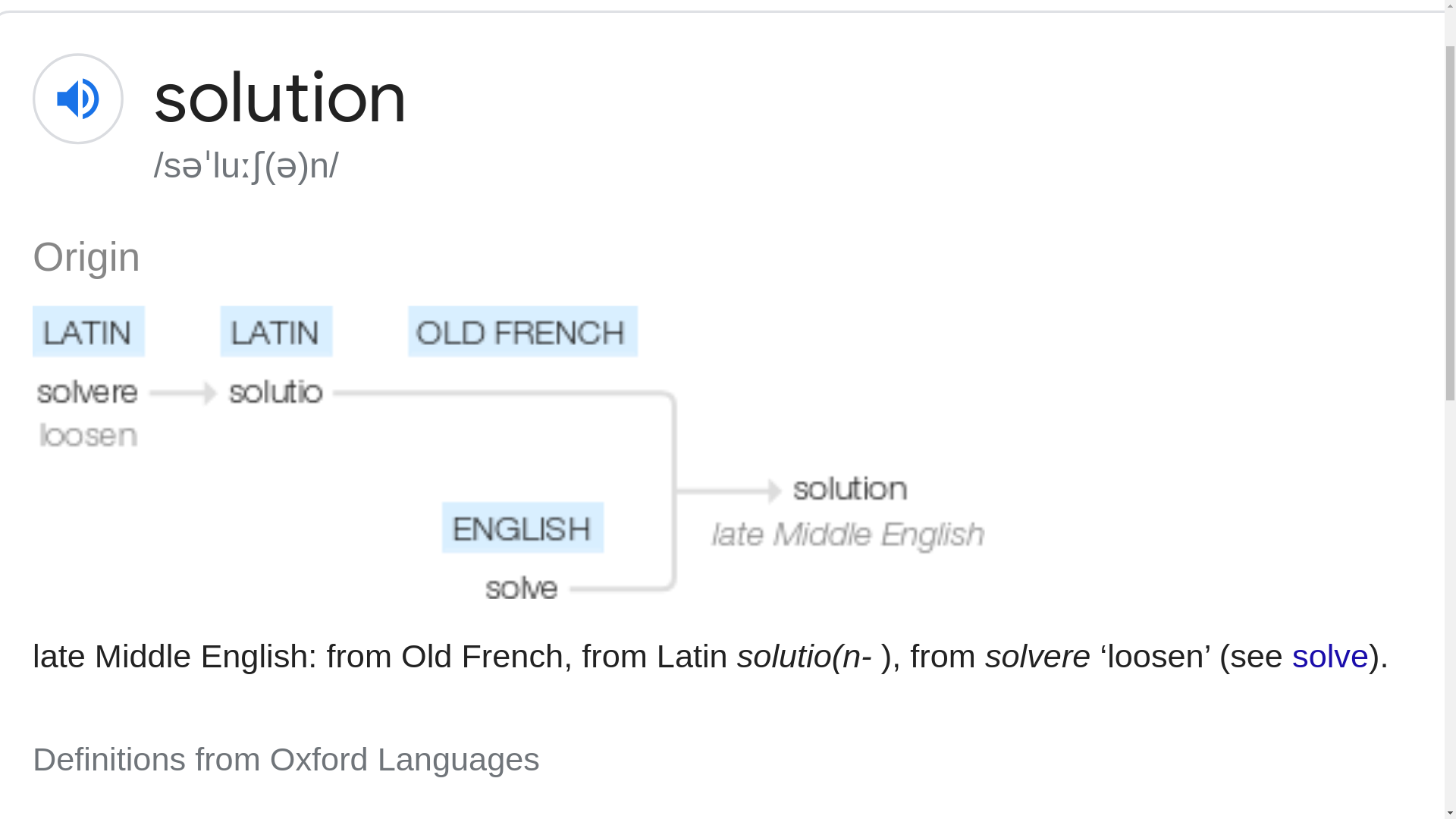The word "solution" has its roots in Latin, deriving from the word “solutio.” The etymology can be broken down as follows:
- Latin "solutio": Meaning a loosening or unbinding. This comes from the verb “solvere,” which means to loosen, untie, or dissolve.
- Latin "solvēre": This is a compound of “sol-,” a variant of “se-” (apart), and “luere” (to wash or to loosen).
Over time, the meaning of "solution" has evolved and broadened. In English, it has been used since the 14th century to refer not just to the act of dissolving a substance in a liquid, but also to the means of solving a problem or answering a question. The sense of finding an answer or explanation encapsulates the idea of resolving a complex situation, untangling its components to reach a clear understanding or resolutionIn summary, the etymology of "solution" reflects a journey from the physical act of loosening or dissolving, through to the more abstract notion of resolving problems and finding answers.


